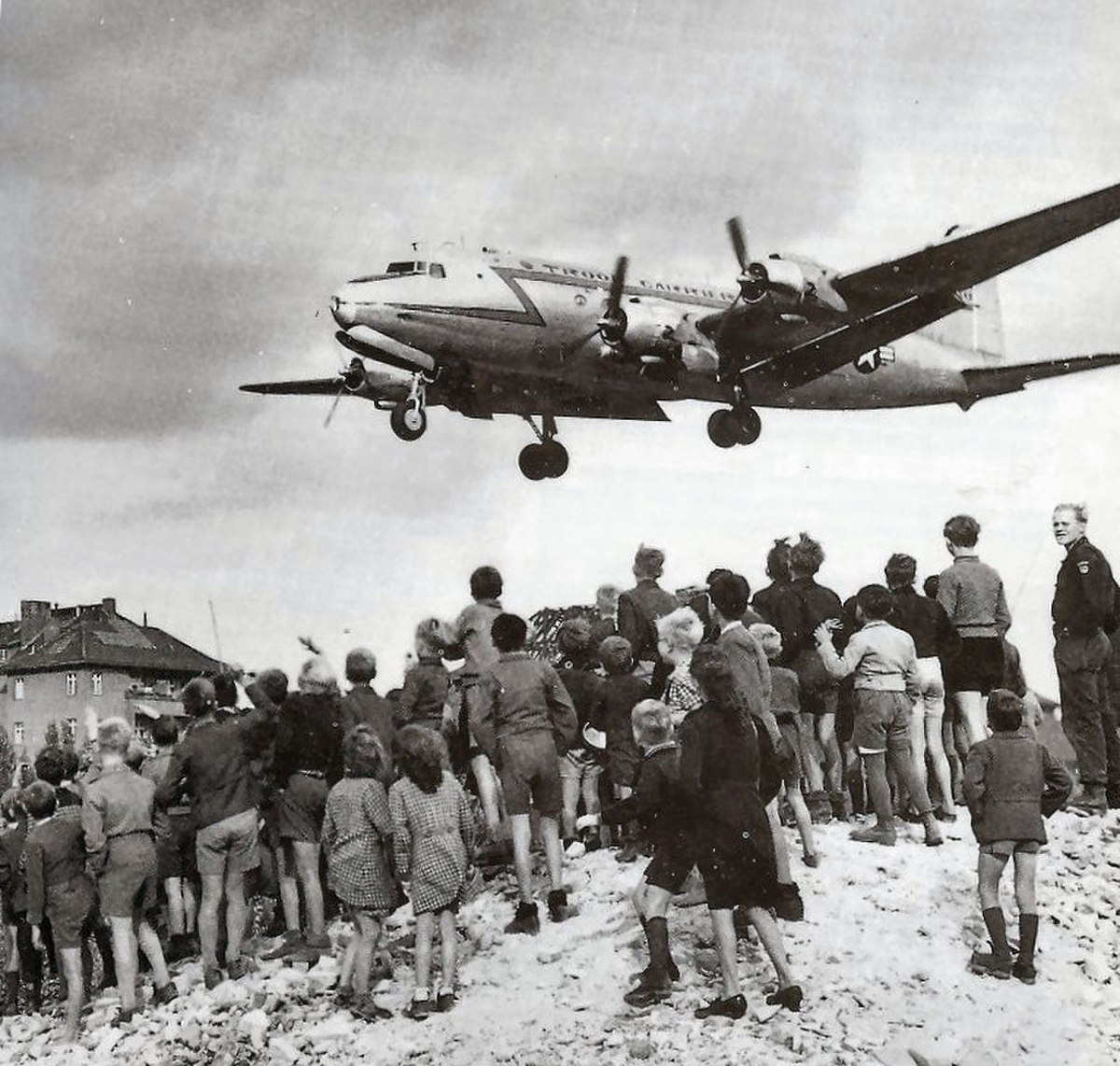
Berlin Blockade
Berlin, GermanyThe United States and Britain merged their western German occupation zones into "Bizonia" (1 January 1947, later "Trizonia" with the addition of France's zone, April 1949). As part of the economic rebuilding of Germany, in early 1948, representatives of a number of Western European governments and the United States announced an agreement for a merger of western German areas into a federal governmental system. In addition, in accordance with the Marshall Plan, they began to re-industrialize and rebuild the west German economy, including the introduction of a new Deutsche Mark currency to replace the old Reichsmark currency that the Soviets had debased. The US had secretly decided that a unified and neutral Germany was undesirable, with Walter Bedell Smith telling General Eisenhower "in spite of our announced position, we really do not want nor intend to accept German unification on any terms that the Russians might agree to, even though they seem to meet most of our requirements."
Shortly thereafter, Stalin instituted the Berlin Blockade (24 June 1948 – 12 May 1949), one of the first major crises of the Cold War, preventing food, materials and supplies from arriving in West Berlin. The United States, Britain, France, Canada, Australia, New Zealand and several other countries began the massive "Berlin airlift", supplying West Berlin with food and other provisions.
The Soviet Union mounted a public relations campaign against the policy change. Once again the East Berlin communists attempted to disrupt the Berlin municipal elections (as they had done in the 1946 elections), which were held on 5 December 1948 and produced a turnout of 86.3% and an overwhelming victory for the non-communist parties. The results effectively divided the city into East and West, the latter comprising US, British and French sectors. 300,000 Berliners demonstrated and urged the international airlift to continue, and US Air Force pilot Gail Halvorsen created "Operation Vittles", which supplied candy to German children. The Airlift was as much a logistical as a political and psychological success for the West; it firmly linked West Berlin to the United States. In May 1949, Stalin backed down and lifted the blockade.
